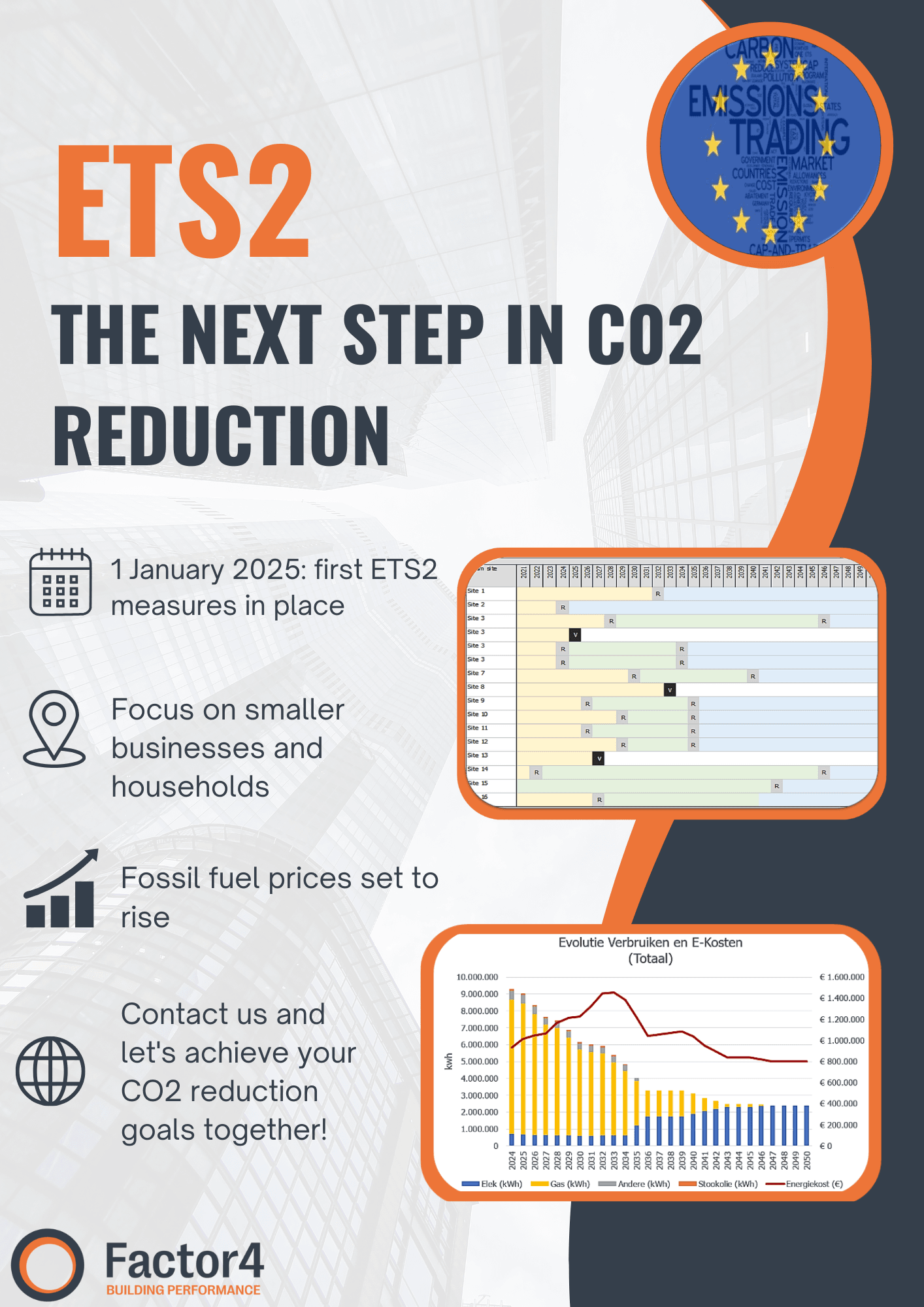ETS2: The next Step in energy transition

From 1 January, fuel suppliers will have to track and report their fossil fuel purchases. This is a crucial preparatory step. ETS2 will become fully operational in 2027. While the exact consequences are not yet entirely clear, one thing is certain: fossil fuels will become significantly more expensive.
On 1 January, the first measures of the new European CO2 emissions trading system, ETS2, entered into force. This system is an extension of the existing ETS, which has applied to energy-intensive companies since 2005. ETS has proven to be effective: a smart system of CO2 emission certificates has already reduced the average emissions of participating companies by around 40%. Now, it‘s time for the next step.
What is ETS2?
ETS2 is specifically aimed at smaller companies and households. The goal? To reduce CO2 emissions from heating and transport by at least 42% by 2030 compared to 2005 levels. This is an important step towards achieving Europe's ‘Fit for 55’ targets.
Preparing for the Future
When drawing up strategic real estate plans for our clients, we already take into account the expected price increases of fossil fuels. Our approach focuses on:
- Optimization of building use: More efficient use of buildings reduces costs.
- Energy efficiency measures: Including better insulation and energy-efficient installations.
- Electrification of heating systems: Helping to gradually phase out fossil fuels.
These measures not only reduce the property's CO2 emissions, but also keep energy costs manageable.
Would you also to develop a strategic real estate plan to make your buildings future-proof? Contact us and discover the possibilities!
Recent articles

VDAB takes major steps toward greater workplace comfort
Investing in comfortable workplaces pays off. VDAB proves this with the results of its most recent Comfortmeter survey, conducted by Factor4. After the first measurement in 2017, a new survey was carried out in 2024 to assess how employees experience their workplace comfort. The result? A noticeable improvement in both satisfaction and overall well-being at work.

EPC Label requirement at portfolio level: A game-changer for strategic real estate management
Building energy regulations are undergoing a major update. Whereas previously each individual building had to comply with the EPC label requirement, it will soon be possible to meet this requirement at the portfolio level. This gives property owners, from school networks to real estate portfolio managers, far greater strategic freedom to phase renovations intelligently and allocate resources more effectively. This change makes the strategic real estate plan more important than ever: it becomes the key instrument to meet legal obligations efficiently while achieving the greatest sustainable impact.

Measuring means winning
Smart metering is smart management and strategic sustainability. Metering infrastructure today is much more than a technical obligation, it is a powerful lever for energy savings, cost efficiency, and sustainable performance.